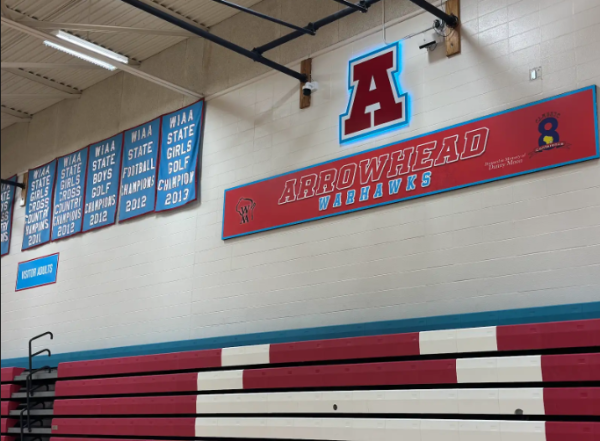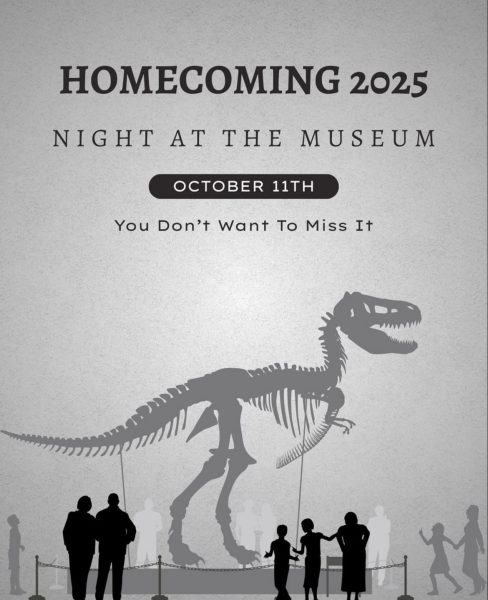Arrowhead Students, Teens struggle with Body Image
According to Teens Health from Nemours, the three main factors that influence a teenager’s self esteem are puberty and development, families and school, and other outside influences.
During the ages of 10 to 17, a human’s body goes through changes. This results in high school being a time of new developments for students, which may result in issues with self-esteem especially when it comes to body image.
“Society has taught me that no matter what size I am, I will never be good enough. You’re too skinny, too fat, too tall, too short, too this and too that. To be honest, I don’t even think society knows what the ‘ideal’ should be. It’s just a bunch of floating opinions in an ocean of people crashing down on everyone and expecting you to roll with the tide,” says Sydney Flynn, an Arrowhead sophomore.
Due to the push from society to look perfect, as well as physical changes teens go through, teengers are often uncomfortable with the way they look.
“I’m not very fond of my body image to be completely honest. There’s always a sense of never being enough, wanting to be the prime image of perfection that I don’t believe anyone can ever really achieve,” says Amanda Stahl, an Arrowhead sophomore.
According to Just Say Yes: Youth Equipped to Succeed, the media overall has a negative impact on self image. In terms of females, the average woman weighs 23 percent more than models who are airbrushed and photoshopped.
Brandon Szpot, an Arrowhead sophomore, says, “Personally, if I had the power to change my genetic features, I would look almost nothing like I do today. I’ve never been fond of my appearance, and it saddens me that this is the face and body that I am stuck with.
“Body image itself though is toxic. In an age of progressive thinkers coming to power, you’d think that the idea of body image would stand aside for more crucial features that come from within. However, it makes sense that something like this. Although I think it’s a negative that we should work to combat, we can’t be surprised that it’s a primary concern for a lot of teenagers, given that physical features play an important role in evolution.”
Due to the media’s influence on body image, eating disorders are common in teenagers, as girls and boys alike are striving to fit the ideal look. North Dakota State University says that 90 percent of women who have developed an eating disorder are between the ages of 19 and 25. Ten to 15 percent of people with anorexia or bulimia are males.
“I have known people with eating disorders at our age and it makes me really sad that they feel the need to change anything about them,” says Brooke O’Connor, a freshman at Arrowhead.
Savannah Julius, an Arrowhead sophomore, says, “I experienced a girl puking directly after lunch and when I tried to console her, she only stated she does this all of the time.”
According to Thomas Stuber, counselor at South campus, the most common issues that come along with body image are stress, anxiety, depression, and eating disorders. To deal with these in a positive way, it is important to continue to develop the strong areas in life and to focus on the beauty both inside and out.
Stuber says, “If you know someone who you think might be struggling with issues related to body image (particularly eating disorders), chances are these issues will not go away on their own if they are kept secret from everyone. Please encourage that person to seek out help from a trusted adult!”
Stahl says, “The concept of body image is that the media projects it as a problem with the way you look. The fact of the matter is there was never a problem. There is nothing wrong with your size, your curves, your tone in muscles, your strength, your scars, your flaws, and stretch marks. It’s not your job to look like the people on the magazines. Everyone is good enough already, and it’s time that people start to realize that. What I have noticed is that the flaws we see in others, never seem as dreadful as the ones we see in ourselves. It’s that loathing sensation of wanting to be enough. But never realizing that you’re more than enough. But beauty isn’t a picture, a face, a body. Being ‘beautiful’ and ‘handsome’ isn’t about a flawless acne free face, makeup, how built up you are, the long legs, the pearly white teeth. Beauty comes from within the depths of your soul. As long as you know who you are, and you know that you are a good person. That’s what matters. There is perfection within imperfection and there is beauty within flaws. Why take shame in how you were born.”









